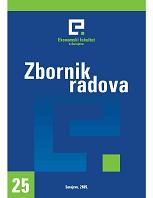Sistemi anketa domaćinstva i mjere nejednakosti i siromaštva
Systems of household surveys and the measurement of inequality and poverty
Author(s): Rabija Somun-KapetanovićSubject(s): Economy
Published by: Ekonomski fakultet u Sarajevu
Keywords: household surveys; inequality; poverty; indicators of inequality; income distribution
Summary/Abstract: The paper gives a short overview and the basic characteristics of different types of household surveys. Surveys are needed for research, analyses and decision-making concerning the measurement of inequality in income distribution, as well as the analysis of poverty. For each of the four types of surveys (specific surveys, types of PADEM survey, LSMS and DSA surveys), the historical context in which those were used has been evaluated. The advantages and disadvantages of each type of survey have been critically presented. Knowing that the objective of each survey is to collect data in order to study a researched economic phenomenon, the most frequently used indicators of inequality of income distribution have been presented. These are: the interdeciles ratio, Lorenz’s curve, Gini’s coefficient, Theil’s indicator, the variance of income logarithms and Atkinson’s indicator of inequality.
Journal: Zbornik radova Ekonomskog fakulteta u Sarajevu
- Issue Year: 2005
- Issue No: 25
- Page Range: 457-474
- Page Count: 18
- Language: Bosnian

